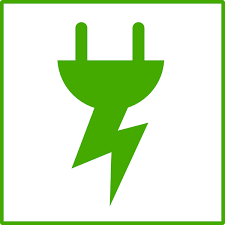Stamp: USSR Academy of Sciences' Nuclear Power Plant (Soviet Union, USSR 1956)
USSR Academy of Sciences' Nuclear Power Plant (Soviet Union, USSR 1956)
31 January (Soviet Union, USSR ) within release World's First Nuclear Power Plant goes into circulation Stamp USSR Academy of Sciences' Nuclear Power Plant face value 1 Russian ruble
| Stamp USSR Academy of Sciences' Nuclear Power Plant in catalogues | |
|---|---|
| Michel: | Mi:SU 1804 |
Stamp is horizontal format.
Stamp USSR Academy of Sciences' Nuclear Power Plant it reflects the thematic directions:
An economy is an area of the production, distribution and trade, as well as consumption of goods and services. In general, it is defined as a social domain that emphasize the practices, discourses, and material expressions associated with the production, use, and management of resources. A given economy is a set of processes that involves its culture, values, education, technological evolution, history, social organization, political structure, legal systems, and natural resources as main factors. These factors give context, content, and set the conditions and parameters in which an economy functions. In other words, the economic domain is a social domain of interrelated human practices and transactions that does not stand alone.
In microeconomics, an industry is a branch of an economy that produces a closely related set of raw materials, goods, or services.For example, one might refer to the wood industry or to the insurance industry.
In physics, energy (from Ancient Greek ἐνέργεια (enérgeia) 'activity') is the quantitative property that is transferred to a body or to a physical system, recognizable in the performance of work and in the form of heat and light. Energy is a conserved quantity—the law of conservation of energy states that energy can be converted in form, but not created or destroyed. The unit of measurement for energy in the International System of Units (SI) is the joule (J).
Electricity is the set of physical phenomena associated with the presence and motion of matter possessing an electric charge. Electricity is related to magnetism, both being part of the phenomenon of electromagnetism, as described by Maxwell's equations. Common phenomena are related to electricity, including lightning, static electricity, electric heating, electric discharges and many others.
A building or edifice is a structure with a roof and walls standing more or less permanently in one place, such as a house or factory. Buildings come in a variety of sizes, shapes and functions, and have been adapted throughout history for a wide number of factors, from building materials available, to weather conditions, to land prices, ground conditions, specific uses and aesthetic reasons. Buildings serve several needs of society – primarily as shelter from weather, security, living space, privacy, to store belongings, and to comfortably live and work. A building as a shelter represents a physical division of the human habitat (a place of comfort and safety) and the outside (a place that at times may be harsh and harmful).




